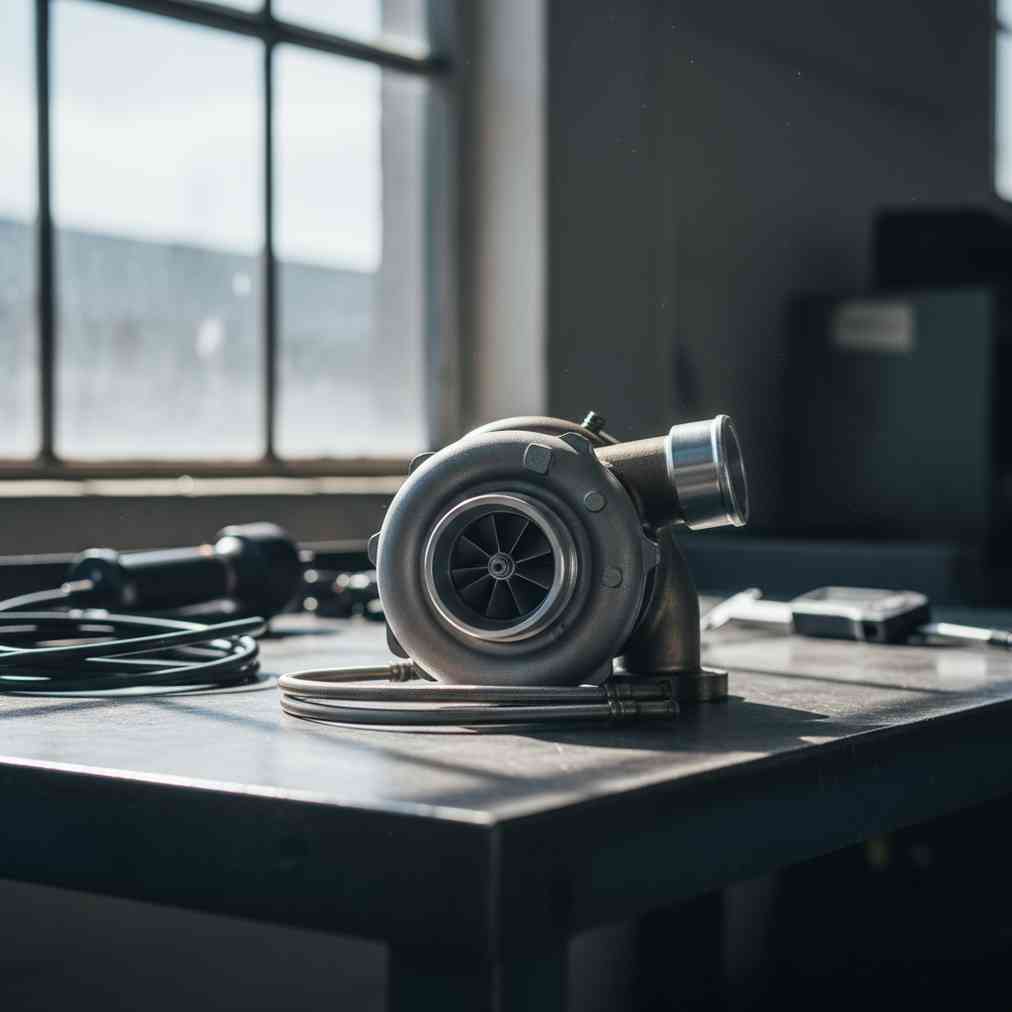Buying a used turbocharger from a junkyard can save you hundreds or even thousands of dollars compared to purchasing new. With new turbochargers ranging from $800 to $3,000 or more, the cost savings make this an attractive option for budget-conscious car owners and enthusiasts. However, success depends on knowing what to look for and how to properly test these precision-engineered components before making a purchase.
Why Choose Used Turbochargers from Junkyards
The primary advantage of buying a used turbocharger is the substantial cost reduction compared to new or professionally reconditioned units. This cost-effectiveness makes turbocharging more accessible for budget builds, student projects, or as a temporary solution for daily drivers. When searching for quality used parts, finding reliable salvage yards near you becomes essential for accessing the best inventory and prices.
Furthermore, opting for a used or reconditioned turbocharger is an environmentally friendly choice, as it reuses existing components and reduces the need for new raw material extraction and manufacturing energy. Many junkyards also offer warranties on their parts, providing additional peace of mind for your purchase.
Essential Pre-Purchase Inspection Steps
When evaluating a used turbocharger at a junkyard, a meticulous visual and physical inspection is paramount. Professional inspection guidelines emphasize the importance of systematic evaluation to avoid costly mistakes.
Overall Condition and Housing Assessment
- Exterior Inspection: Look for visible cracks, significant corrosion, or unusual discoloration on the turbocharger housing. Discoloration, especially bluing, can indicate excessive heat exposure
- Mounting Points: Check mounting points and studs for damage or corrosion. Broken studs can add significant cost to a rebuild
- Exhaust System Connection: Inspect where the turbo connects to the exhaust system for cracks or warping
Compressor and Turbine Wheel Evaluation
The compressor and turbine wheels are critical components that require careful examination. According to turbocharger inspection guidelines, blade condition is one of the most important factors to assess.
- Blade Condition: Examine blades for chips, dents, bends, or foreign object damage. Blades should not be rolled upward, indicating housing contact
- Rubbing/Contact Marks: Use a flashlight to inspect wheel edges and housing interiors for shiny marks or contact signs
- Map Groove Cuts: Look for cuts on the compressor wheel edge, which indicate excessive shaft play and bearing damage
Critical Shaft Play Testing (The Shake Test)
The shaft play test is arguably the most important evaluation you can perform. This simple but effective test reveals the internal condition of the turbocharger’s bearings and overall mechanical integrity.
| Test Type | What to Check | Warning Signs |
|---|---|---|
| Radial Play | Side-to-side movement of compressor wheel | Excessive movement indicates worn bearings |
| Axial Play | In-and-out shaft movement | Significant play suggests worn-out turbocharger |
| Combined Rotation | Smooth rotation when spinning shaft | Binding, grinding, or loose feel |
“If you have a shake problem and you see the wheels flopping around in there, and the turbine and compressor wheel don’t rotate at the same time, the best thing to do with this turbocharger is put it in a nice box and throw it in the trash.”
Tim’s Turbos
Oil Seals and Leak Detection
Oil seal integrity is crucial for proper turbocharger function. Failed oil seals can lead to oil consumption issues and reduced performance. Professional turbo repair manuals emphasize the importance of thorough oil seal inspection.
- Compressor Housing: Check inside for oil signs – small residue may be acceptable, but pooling suggests problems
- Oil Feed/Drain Ports: Inspect for damage or blockages that could affect lubrication
- External Leaks: Look for oil stains around gasket surfaces and connection points
Wastegate and Actuator Inspection
The wastegate system controls boost pressure and is prone to heat-related stress. Proper inspection of this component can save you from future headaches and performance issues.
- Wastegate Port: Examine for cracks, as this is a common spot for heat-related stress damage
- Actuator Condition: If attached, check for obvious damage, corrosion, or binding
- Linkage Movement: Verify smooth operation of connecting rods and pivots
Quick Bench Tests You Can Perform
While comprehensive bench testing requires professional equipment, several simple tests can provide valuable insights into a turbocharger’s condition. These tests, as outlined in professional evaluation guides, can be performed with basic tools.
Spin Test Procedure
- Manual Rotation: Gently spin the compressor wheel – it should rotate smoothly and quietly
- Coast Down: A good turbo will spin for a reasonable time without grinding or scraping noises
- Turbine Side: Blow air into the exhaust housing to verify free turbine wheel movement
Professional Testing Capabilities
Professional turbocharger test benches can perform dynamic testing, measure boost characteristics, calibrate geometry, and check actuator performance. While these advanced diagnostics are typically out of reach for junkyard buyers, understanding their scope helps appreciate the thoroughness of professional evaluation.
Common Red Flags to Avoid
Certain warning signs should immediately disqualify a used turbocharger from consideration. Recognizing these deal-breakers can save you time and money while ensuring you don’t end up with a problematic unit.
| Component | Red Flags | Likely Outcome |
|---|---|---|
| Compressor Wheel | Chipped or bent blades, contact marks | Immediate failure or poor performance |
| Turbine Wheel | Heat damage, cracked blades | Catastrophic failure risk |
| Housing | Cracks, excessive corrosion | Structural failure, boost leaks |
| Shaft/Bearings | Excessive play, binding | Rapid wear, oil consumption |
Market Trends and Future Considerations
The turbocharger market is experiencing significant growth, with projections indicating it will reach $32.4 billion by 2026. More than 20% of vehicles are expected to run on turbocharged power, including applications in electric vehicles to extend range. This increasing prevalence underscores the growing demand for both new and used turbocharger solutions.
For those looking to dispose of their old vehicle while searching for parts, getting an instant quote for your junk car can help offset the cost of purchasing quality used turbocharger components.
Expert Recommendations and Best Practices
“Your turbo is not an area of your vehicle where you can save money. It’s literally the heart of your car’s power. Whether new or used, make sure it’s a good one.”
Goldfarb & Associates
When buying used turbochargers, especially from vehicles that have been in accidents, remember that “a vehicle that has had the front end smashed beyond recognition was probably moving pretty good the day before it hit the scrap yard—and as long as the parts you need aren’t damaged, they will be the better choice.”
Additional Testing Resources
For more comprehensive evaluation techniques, professional turbo repair resources provide detailed bearing clearance specifications and rebuilding guidelines that can help you make informed decisions about used turbocharger purchases.
Final Inspection Checklist
Before finalizing your purchase, use this comprehensive checklist to ensure you haven’t missed any critical inspection points:
- Visual Condition: No cracks, excessive corrosion, or heat damage
- Shaft Play: Minimal radial and axial movement
- Wheel Condition: Intact blades with no contact marks
- Oil Seals: No significant oil presence in compressor housing
- Wastegate: No cracks in port area, functional actuator
- Rotation Test: Smooth, quiet operation when spun manually
- Documentation: Vehicle history if available, mileage information
By following these comprehensive inspection and testing procedures, you can significantly increase your chances of purchasing a reliable used turbocharger that will provide good service. Remember that while the upfront savings are attractive, investing time in proper evaluation will pay dividends in long-term reliability and performance.
Additional detailed inspection procedures and technical specifications can be found in professional turbo inspection guidelines that provide industry-standard evaluation criteria for used turbocharger assessment.





Leave a Reply
You must be logged in to post a comment.